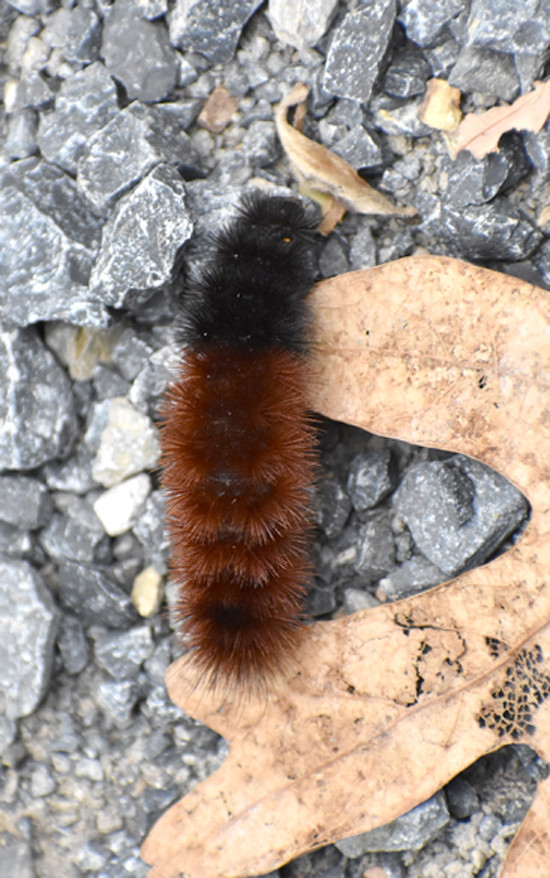Even though it is widely believed that the woolly bear caterpillar can predict the upcoming winter’s severity, the truth is that this caterpillar can’t predict what Old Man Winter has in store for us in the upcoming winter.
The woolly bear caterpillar’s coloring is based on how long the caterpillar has been feeding, its age, and species. The better the growing season is the bigger it will grow. This results in narrower red-orange bands in its middle. Thus, the width of the banding is an indicator of the current or past season’s growth rather than an indicator of the severity of the upcoming winter. Also, the coloring indicates the age of the woolly bear caterpillar. The caterpillars shed their skins or molt six times before reaching adult size. With each successive molt, their colors change, becoming less black and more reddish. In addition, there are approximately 260 species of tiger moths (the adult of the woolly bear caterpillar) in North America, and each species has slightly different color patterns and hair coverings. As a result, some of the color and hair variations that we see each fall are a result of these different species.
As far as the story about the woolly caterpillar’s coat, this is how Mother Nature helps it survive winter. The fur is called setae and it isn’t there to protect them from the cold weather. Instead it actually helps them to freeze more controllably. Here is something truly remarkable. Once settled in, the caterpillars hibernate, creating a natural organic antifreeze called glycerol. They freeze bit by bit, until everything but the interior of their cells are frozen. These interior cells are protected by the hemolymph. Woolly bears can – and do – survive to temperatures as low as -90oF. This ability to adapt to cold shows up particularly in the Arctic, where the woolly worms live in a strange state of slow motion. Most caterpillars live for two to four weeks before becoming moths. The Arctic woolly worms, however, spend at least 14 years in the process! The woolly bear caterpillar has even been known to survive an entire winter completely frozen in an ice cube.
As far as the woolly bear caterpillar’s travel goes, they are simply moving about in search for that perfect spot to curl up and spend the winter. This is usually under bark, a rock, or a fallen log.
Each woolly bear caterpillar you see in the fall and winter becomes an Isabella Tiger Moth in the spring. It will winter in a comfortable spot and awaken in the spring. It will continue to feed for a time and eventually forms a cocoon and pupates.
After about two weeks, the small, orange-yellow moth emerges. The Tiger Moth doesn’t have any distinctive marks on its wings, but has three rows of small black dots on its abdomen. The moths are most active at night during the summer months.
The myth that woolly bears can predict the winter has been around since colonial times. However it grew in popularity after Dr. Howard Curran (curator of entomology from the American Museum of Natural History) did a small study in 1948. He went out to Bear Mountain, New York with a reporter, his colleagues, and their wives. He counted the brown bands on 15 different specimens. He then made a prediction for the winter. This news story was published in the New York Herald Tribune. It was picked up by the national press and the rest is history.

